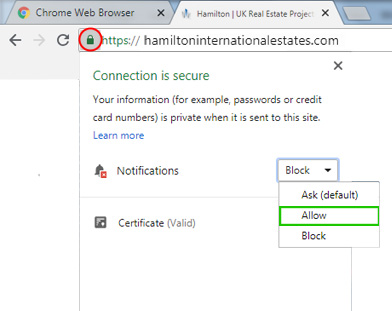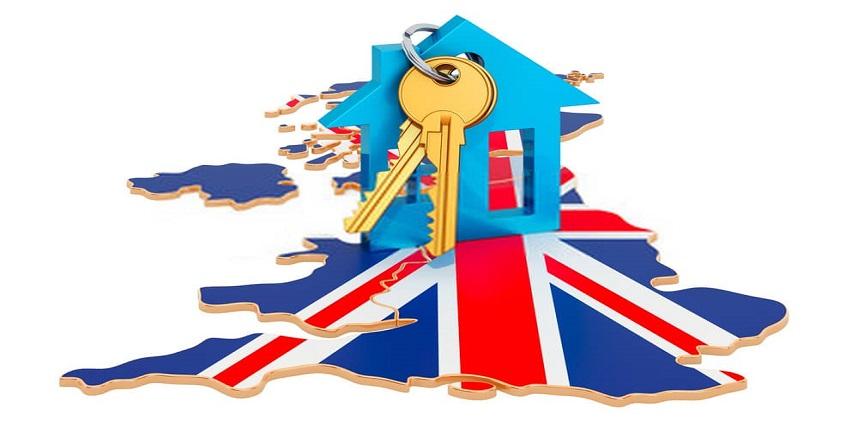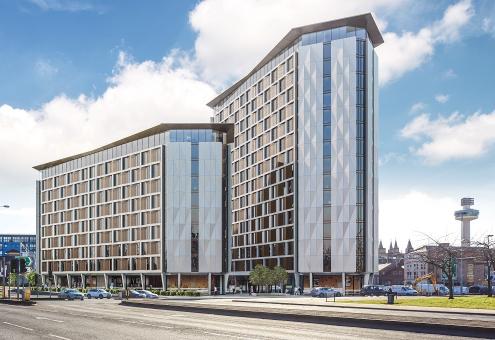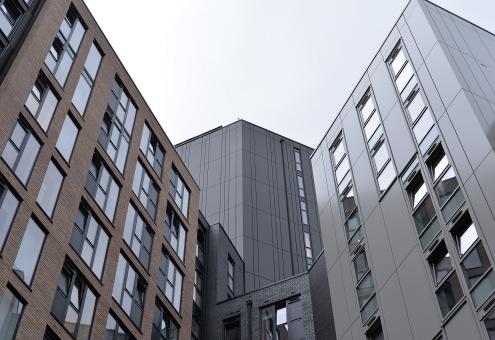What Is A Good Rental Yield UK
19 May 2020
Most long term financial strategies are made to produce income. A good rental yield UK is anywhere between 5 to 6% per cent, while student buys to let-ins may provide higher yields, but it may also incur higher costs.
In the case of investment in a house or apartment, one may have to plan for a long term goal, and there are many standard expenses associated with such investments like the maintenance, mortgage interest, taxes, repairs, utilities, home association fee, etc.
But one can earn monthly income by renting or by leasing the property. Becoming a landlord is a viable vocation, but you need a set of skills to make a living that is not always very easy.
Some people handle property related issues on their own, but some may have to contact the right kind of people who can handle their portfolio. It may take time to build a relationship with people and get the best of work.
In the current UK market, the fall in mortgage rate offers a great opportunity, but the economic issues restrict lending to riskier groups such as first-time buyers, more than ever, to those looking for low deposit mortgage products.
Before the 2007 crisis, investors considered real estate to be one of the most appropriate alternatives for long term capital appreciation, but now the investors look only for the monthly returns to earn.
In the year, the coronavirus pandemic hit several property transactions and delayed home buying in the UK as the lockdown created restrictions on property viewing and social distancing measures hit the ability of the surveyors to carry out valuations. The mortgage lenders anticipate the market to get back on track in the coming weeks as they are expecting to clear the pending valuations of properties.
What Is a Rental Yield?
Rental yield can be calculated as a percentage of the total property value and as a benchmark figure to compare the buy to let. The returns on such investments depend on property price, regional disparities, interest rates, capital appreciation, demand growth, and fluctuation in the housing market.
It is the gain that we expect to get for the property in the year. It is the breakdown of the returns where the monthly rent is compared to the total expense made on the investment property.
The yield is always represented in percentage, and it is calculated by dividing the annual rental income by the initial investment.
To calculate the yield, you need to divide the rent by the property's price and then multiply it by 100.
Such calculations help to cover the running cost, which includes the mortgage repayment, wear / tear or maintenance, repair work, letting expenditure, etc.
What Is a Good Yield on A Rental Property UK?
In the UK, the average rental income varies from one region to other. In Nottingham, the average can be over 7%, and elsewhere, the students’ lettings towns have higher yields.
Student letting offers the best rental, and it is considered good for long term investment. Such lettings can generate a higher turnover of tenants annually, where you need to prepare beforehand to lower the letting fees, potential void periods, and advertising costs.
In 2018, the average yield of around 8% was considered good for a buy to let, as this amount was sufficient for paying the month-to-month maintenance, unforeseen costs, and mortgage payments. It is believed that earnings below 8% may not be able to cover the payments, and the homeowner may not gain much in such investments.
What Is a Good Rental Yield in London?
In 2019, the top rental yield UK was delivered by investments in Manchester that offered more than 7%, and in 2020, the average was in the range of 5.3% to 6.7% across 11 geographical regions ( as per BVA BDRC landlord survey).
The North-Eastern regions offer some of the highest returns, and properties in the outer London region have some of the lowest. The survey found over 6% of returns were given by the properties in the North East, Midlands, Yorkshire, and Humber.
Some key points to keep in mind are -
-
The category of students buy-to-get remains to be one of the best, in terms of returns, where the average rate can be above 6%, with some of the lowest cases of rent arrears. Students pay rents on time as it is backed by the parent guarantor, ensuring higher protection from unpredictability.
-
As the taxes were increased on such investments, the overall benefits declined, and landlords have been trying to counter it by reconfiguring the properties in the manner to get the highest. For example – they are converting large homes into multi-unit blocks or single units into HMO, although it is not an easy option and requires a lot of additional expense, and it may take a long time to get profits as desired.
UK Rental Yields Explained -
Online research on London properties finds the rental yield in Barking and Dagenham to be above 6 per cent. The two places are believed to be some of the best locations for higher-yield investments.
Other popular areas are Merton, Sutton, Woking, Newham, Harrow, and Redbridge that offer around 5 per cent and are considered attractive to landlords seeking opportunities in new buy-to-let.
Several other factors influence rents like
-
If you are planning to increase rents, you may have to see if you are allowed to increase it or not, based on the tenancy agreements.
-
The new rent should be acceptable as per the property size and its location.
-
Those who pay higher rents seek specific criteria- like kitchen and bathroom in good condition, or the option to keep a dog or the notice period clause to allow the tenant two months before vacating - adds attraction.
-
The landlords may have to spend on repairs and insulation to ensure better gains.
Rental Yields Calculator
The yield can be calculated as the benchmark figure to compare buy to let properties. It is a per cent of the total property value and includes the property rate, capital appreciation, interest rate, regional disparities, demand growth, and fluctuations in the housing market. It gives an approximate idea to calculate and compare properties on offer.
A one having a low rental yield can sell at a lower rate, and it may be difficult to get a buyer for such homes. Low means the rental income does not cover the cost of running the home, and without a sustainable contingency budget, one is susceptible to big losses.
Buy-To-Let Rental Yield
To work out, rental yield UK considers the price of the flat. Like - if the price is £100,000 and if the yield is £200 a week, then annually, you get 10.4%.
This is the basic method mostly used with gross returns. Still, to get an accurate estimation of earnings, we need to consider other expenses like insurance premium – which depends on the size of the asset, the type of house, and the location. On average, the premium can be in the range of 2 to 3% of the rent, or it can be higher if the house is furnished.
The cost of upkeep depends on many external factors, and from season to season, one may have to spend on cleaning windows, roof, pipelines, boilers, and insulating pipes. It may require a well-kept inventory to manage the factors like the cost of replacements.
The homeowner may have to spend annually on repairs and maintenance where they need to replace the broken fixtures and fittings. Most landlords re-paint the house to keep it attractive to the potential renters.
The leasehold owner may have to pay the ground rent and service charges, or they need to create the lease agreement where the amount paid by both parties is well documented.
In between the change of tenancy, the house may remain empty. Such phases are called the void periods, when one may not get any rent. If the house is located in a good area, it may not remain void for long, but the owner has to pay the agent to search for the new tenant, and the agent fee can be anything from 10 to 20 per cent of the asking price in the region. The expense of marketing, property management, tenant references, and inventories should be deducted from the overall earnings.
Further, the duration when the house is empty, one may have to pay even for the part that is often paid by the tenant, and it can lead to extra expense, and it increases the annual maintenance expenditure.
How Can You Calculate Rental Yield?
There are different ways one can calculate the rental yield UK. The simplest method is to calculate the yearly rental income that is divided by the property’s purchase price, and then the figure is multiplied by 100 to get a percentage.
One cannot use the generalized rule for yield as the value, and its ability to earn varies depending on many factors like -
-
If you are planning to buy a property, you should first research various expenses. All investments in such areas should be drawn into a spreadsheet to analyze all the factors as it will offer an opportunity to reconsider the decision.
-
Regardless of the type of asset class – apartment, flat, warehouse, or commercial units, there are different risk factors that cannot be pre-estimated.
-
Higher gains mean a good cash flow where the investors can improve the ROI, and higher cash flow makes it easier to get loans. So the profits can be deducted only by considering factors like getting a lease or a mortgage where the decision depends on if you are an owner-occupier or a tenant.
-
The one who lives as a tenant may like to get a loan if they find the location of the property suitable. The location offers an opportunity to start a new business or get a better employment opportunity, or it may be close to the new train station, or it allows buying in a low-cost market.
-
If the location is good, the renter will prefer to move to such a location, and more and more buyers may get interested in such a house, which will automatically lead to an increase in the price of the asset. You may be able to earn more not because of the growing rent but because the cost of the property was low at the time of buying due to temporary market conditions.
Since there are unpredictable factors involved in it, the software-based rental yields calculator may not provide the exact idea of capital growth.
What Is the Average Rental Yield in the UK?
The rental yield is the key factor for the buy to let investors who want to know if it is a good investment. Even lenders try to get average rental yield UK to calculate the affordability of buy to let mortgage.
The lender may try to get gross yield or net yield depending on the factors like the running cost of the property. The gross yield is most commonly used by mortgage lenders to recommend buy to let investment.
As per Howdy data, the average rental yield UK fell from 3.6% in November 2019 to 3.5% in April 2020. Despite the coronavirus pandemic and the economic fallout, the rental yields in some parts of the UK increased. Though the rents declined in the past 6 months in the country, there are many areas where the landlords are getting favourable returns that are much higher than the national average.
Despite the market of uncertainty, tenants are still researching for homes, and it has been a continuous business of the landlords and agents who are working on such transactions through digital mode.
Lately, the returns increased in the North West Leicestershire East Midlands to 4.5%. The buy to let buyers are seeking opportunities in this market that offers low-cost properties, and the average overall two-year mortgage is very low at approx. 2.09 per cent ( as per Moneyfacts figures).
How To Work Out Rental Yield?
To calculate the rental yield, the UK first decides the yield on the cost price of the house, where you should include the stamp duty, the refurbishment cost, and mortgage fees,
and then find the current value of the property. If you have found the annual cost, then add the council tax, insurance, and ground rent figure to the overall cost. From the value, you need to deduct the rent.
One can use online calculators where you fill in the details and find the average per cent yield.
What Is a Good Rental Yield on A Buy to Let?
There is no general rule to get a good rental yield UK because there can be unexpected problems that pop up with such investment from time to time, and one cannot plan for it.
The yield refers to the annual return that one gets on the investment. It can be expressed as a per cent of the property price.
As a thumb rule, one should ensure that to make reasonable monthly profits; the rent should be at least 2 per cent of the purchase price. If it is above 2%, then it will be able to generate positive cash flow. So when you plan to invest in a buy to let try to research the rent offered in a specific area.
Renting for under market value can lower the monthly profits, and it also leads to a large phase of voids. The cost of maintenance of the property is almost fixed, and the property owners may end up renting the house for whatever price is offered. Sometimes, landlords keep the asking price higher, which could lead to the duration of the void – an empty house for several months.
So it is necessary to research the market to find out how much rent you will be able to charge and ask the property managers to offer properties that can generate better rental income. Also, one may have to conduct such research each time they look for a new tenant or during the rental renewal periods.
Categorised in: All News












